 Back to the Be Inspired Blog
Back to the Be Inspired Blog
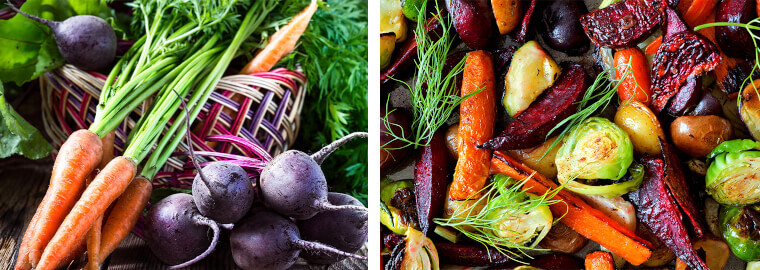
It’s Fall Harvest Time For Home Gardening
One look at your home garden will let you know that summer is gone, and the fall harvest is ramping up. This is the time of year that always puts me in the mood for hearty vegetables roasted in the oven, blended into soups or served up alongside a beautifully-crisp roast chicken.
With a little foresight and some creative scheduling in your home garden, anything you planted with a fall harvest in mind should be ready to harvest any day now. Here are some of our favorites.
Our Favorite Vegetables For A Fall Harvest
Let’s start from the ground up – literally. These plants have spent weeks (perhaps even months) growing away in the dirt, and now it’s time for them to see the light.
Beets
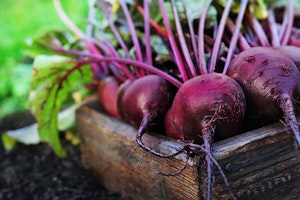
Beets are officially ready for harvest from your home garden when their shoulders (the top part of the bulb) begin to poke through the soil. Simply grab the greens near the bottom and pull until the beet root comes loose. If the weather has been dry recently, you’ll want to water a day or two before harvesting to soften the soil around them.
If you’ll be using them right away, rinse the soil off immediately and allow them to dry. Otherwise allow the soil to air-dry and gently brush it off before storing in sawdust or sand in a cool, dark place. Wash them thoroughly before consuming.
Beet greens will only last for a few days after harvesting. Keep them refrigerated until you’re ready to use them.
Celeriac
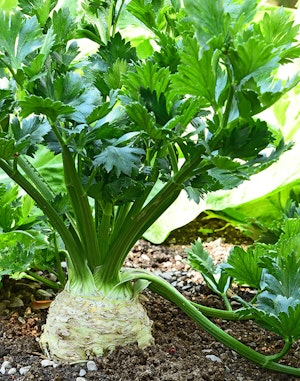
Celeriac can be an intimidating-looking root with its rough, bulbous exterior, but it makes for a delicious addition to both soups and salads. If you have this growing in your home garden, leave it be until it’s been exposed to one light frost – this will give it a serious flavor boost while ensuring a firm, crisp root.
When the root has reached three to four inches in diameter, cut the surface greens to a half inch long. Loosen the soil around the sides of the root with a garden fork, and use the fork to lever the root out of ground without piercing the skin. Wipe off the excess soil, but don’t wash the root until you plan to use it. Celeriac will store for up to three months if packed in sand in a cool, dark place.
Turnips
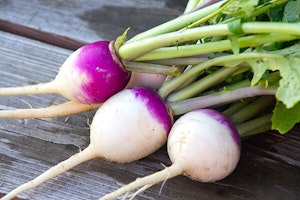
Turnips are a great addition to your home garden and reach maturity in as little as eight weeks. That means you can plant them mid-summer for a perfect fall harvest time. Larger varieties (greater than 2-3” in diameter) may take up to 12 weeks.
Like beets, turnips can be picked when the top of the bulb begins to protrude through the dirt. However, they can be harvested earlier for a more tender root, or left longer for a larger, more robust bulb.
To harvest turnips, grasp firmly where the greens meet the root and pull from the ground. If you would like to store them, remove the loose soil and cut the greens off before packing in a straw-lined box in a cool cellar or garage.
Parsnips
Parsnips take between 100 and 120 days to reach full maturity and taste best if left in the ground for a week or two of near-freezing temperatures.
For a fall harvest, cut the greens about an inch above the ground and use a garden fork to loosen the soil and dig up the root. A mature and well-grown parsnip should reach between eight and 12 inches in a home garden. Any roots damaged during harvesting should be used immediately, but intact roots can be packed in sand or straw and stored in a cool, dark place.
Radishes
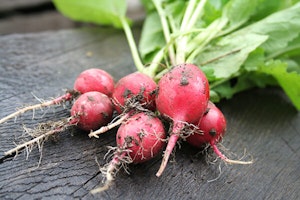
Especially if you have kids, radishes are a fun and quick vegetable to grow in your home garden, reaching full maturity in as little as three weeks. Simply grab the greens near the soil and pull the plant up to harvest.Remove the root and greens, and wash thoroughly. Radishes will keep for up to two weeks in the fridge, but can not be preserved in a root cellar like other vegetables.
Moving up a level, here are some of our favorite home garden picks that grow at or directly on the soil level.
Broccoli
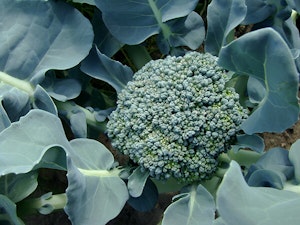
Between fending off slugs and keeping it from bolting during hot temperatures, getting your broccoli to survive until it’s ready for the fall harvest can be a challenge! If you made it, here are signs that it’s ready for picking.
The broccoli head should be between four and seven inches across, with florets on the outside edge of the head about the size of a match head. You can also keep an eye on the color, which should be a deep green. If you see even a hint of yellow, the florets are starting the bloom or bolting process, and need to be harvested immediately.
Use a sharp knife and cut the head of the broccoli off the stem about five inches down from the top of the main head. Smaller side shoots can also be harvested if they are ready. Try to make cuts in a single, smooth motion to avoid damaging the plant and any side shoots that may not be ready to harvest yet.
Cauliflower
Harvest your cauliflower when it is white, firm and large – between six and eight inches across – but before the individual lobes have begun to separate. Use a large knife to cut near the bottom of the plant, removing any leaves. If pests are a concern in your home garden, you can soak the head in a solution of one tablespoon salt and two gallons of water for 20 minutes before storing or eating.
After harvesting the main head, continue to water the plant and you may find it starts growing miniature florets that can be harvested two or three weeks later.
Cauliflower keeps best frozen or canned, but will stay fresh in your refrigerator for up to a week.
Kohlrabi
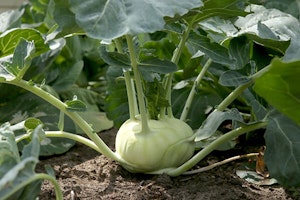
If you’ve never grown this unique plant in your home garden before, it can be tricky to tell when it’s ready for the fall harvest. Fast-growing varieties are generally ready in 50 to 70 days, or when the stem reaches three inches in diameter.
Harvesting is best done when the plants are small and flavorful. Cut the bulb from the root with a sharp knife at or slightly below soil level and just under the bulb. The leaves can be removed, washed and used the same way you would with cabbage leaves. The bulb itself must be peeled and can then either be eaten raw or cooked.
Pumpkins
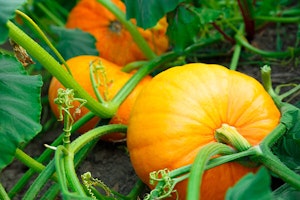
Pumpkins are probably the most iconic fall harvest crop, even if they might take up more space than is always practical in a home garden. Regardless, if you grew your own this year, then fall is the right time to show them off.
If you prefer to keep them growing a little longer for roasting later on, pumpkins can stay on the vine until the first frost. Otherwise, look for a rind that’s fully-colored and firm. If your fingernail easily pierces or creates an indentation in the rind, it’s still too soft. The only exception is if a hard frost is coming, which will damage your crop. Harvest all your pumpkins immediately and set them in a warm, sunny place to allow them to continue ripening off the vine.
Ideally, harvest your pumpkins on a dry, sunny day. Wear gloves to protect against prickly vines and use hand pruners or a sharp knife to cut the vine on either side of the stem. Give your pumpkin at least a few inches of stem (six is ideal) and make sure to keep it intact to prevent spoiling.
Collard Greens
Collard greens are ready to harvest 75 to 85 days from planting in your home garden. They make a hardy addition to your dinner table when the days start to get shorter. Harvest leaves from low on the stem and work your way up, picking leaves from the outside of the plant and working inward.
Collard leaves are most flavorful when harvested in cool weather, especially after a mild frost, and best picked when they are less than 10 inches long and dark green. Leave at least four leaves at the top of the plant to allow the plant to grow new leaves for future fall harvest.
A little higher now, these are some of our favorite elevated veggies to grow in your home garden for a fall harvest.
Brussels Sprouts
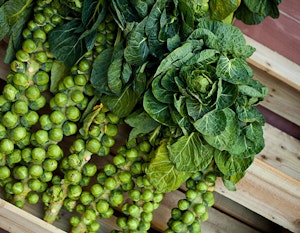
The first time I saw brussels sprouts growing on a stalk, I couldn’t stop laughing – convinced it was some kind of elaborate joke being played by the farmers market. That said, this delicious vegetable is ready for harvesting between 85 and 105 days from planting.
Sprouts should be picked from the stalk when they are one inch in diameter, and will ripen from the bottom of the stalk up. You can give a firm twist to remove the sprout, or use a pair of garden scissors – but be careful not to damage the stalk. A single plant in your home garden will produce about 100 sprouts total over two to three months.
Bush Beans
Bush beans are preferred over pole beans for a fall harvest since they will produce a higher yield before the first hard frost kills them off. If you get a late start planting them, make sure you pick a variety that has the earliest maturation date, or any variety with “early” in its name.
To harvest the bean pods, simply grasp the pod near the top with one hand and use the other to steady the vine. Use a pinching motion or give a firm but gentle jerk to separate the pod from the vine without causing damage to the plant. It is wise to harvest pods as they are ready, rather than waiting for a larger harvest, to avoid pods becoming tough and stringy.
Ask The Experts At SummerWinds
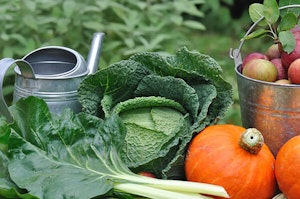
Do you have something growing in your home garden that you’re not entirely sure how to harvest? Stop by any one of our convenient South Bay Area locations and talk to our Trusted Garden Advisors. They’re happy to give advice on all your fall harvest questions, and tips on overwintering your plots so that they’re ready to go again in the spring.
About SummerWinds Nursery: SummerWinds Garden Centers is a leading high-end retailer of garden and nursery products. Headquartered in Boise, Idaho, SummerWinds operates retail nurseries in the greater Phoenix, Arizona, area and in Silicon Valley, California, making it one of the largest independent retail nursery companies in the west. SummerWinds appeals to both the serious and casual gardeners, with a broad selection of premium gardening products and a friendly and knowledgeable staff.

